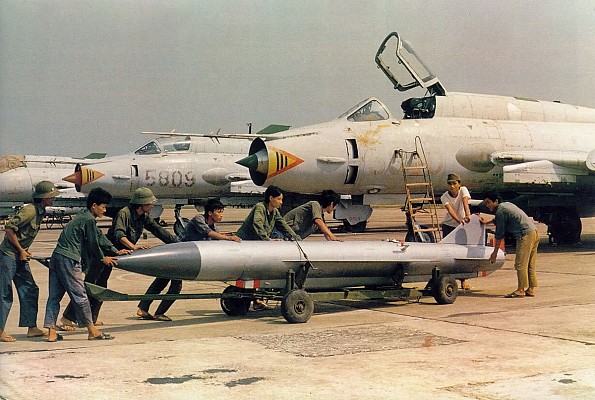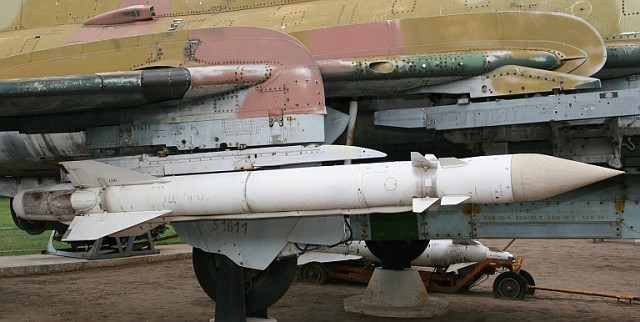Raduga Kh-28
NATO: AS-9 Kyle
Overview

Kh-28 / AS-9 Kyle
Kh-28 anti-radiation missile in use with Vietnamese air force Su-22.
Source: www.militarynuts.com -
© Copyright lies with original owner
Development for use on Yak-28N
1967 - 1969
Test launches
1970 - 1974
Development for use on Su-17 and Su-24
Soviet Union - Leningrad north plant (factory 272)
Izdeliye 93 (article index)
Nisan-28 (Iraqi modification)
Description
Introduction
The Kh-28 is an anti-radiation missile of Soviet origin. It was developed as a long range standoff weapon against Western SAM systems. Initially developed for use by the specialized version of the Yak-28, it was more widely used on the Su-17 ground attack fighter.
Design
The Kh-28 uses a liquid fuel rocket motor, which significantly complicates ground handling. Early prototypes used solid propellant. These were unable to meet the distance requirements set for use as a standoff weapon. In line with most early anti-radiation missiles the seeker can be exchanged by the ground crew. Before each mission a seeker must be selected to match the type of radar used by the intended target.
Launch platforms
The Kh-28 was developed for use on the Yak-28N. Two missiles could be carried, but the aircraft did not enter service. The Su-17 series became the foremost launch platform. The Su-17M, M2 and M3 could carry a single missile under the fuselage and the Metel-A targeting pod under the right wing. The export Su-20 and Su-22 could be armed with the Kh-28 as well. The Su-24 and Su-24M strike aircraft could carry and launch two Kh-28 missiles.
List of Kh-28 variants
Details
Related articles

Zvezda Kh-25MP
The Kh-25MP is a more modern Soviet anti-radiation missile than the Kh-28. It lacks the range of the Kh-28, but is a much less complicated weapon system.